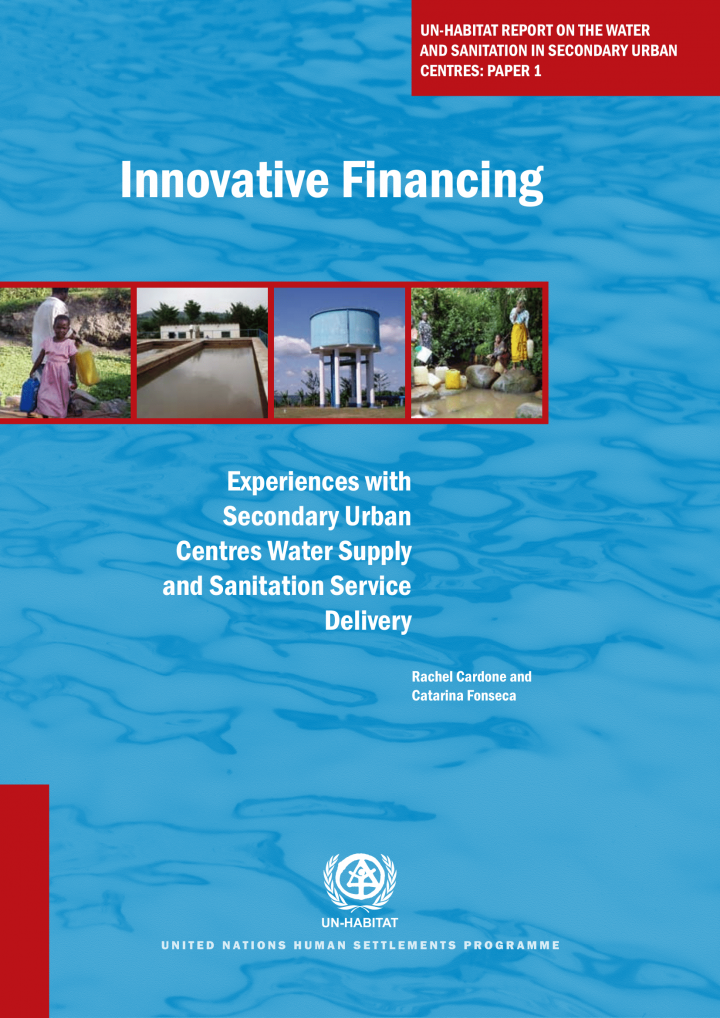Innovative Financing - Experiences with Secondary Urban Centres Water Supply and Sanitation Service Delivery
Cardone, R., Fonseca, C. (2006)

Published in: 2006
Pages: 44
Publisher:
United Nations Human Settlements Programme (UN-Habitat), Nairobi, Kenya
Author:
Cardone, R., Fonseca, C.
Uploaded by:
SuSanA Admin
Partner profile:
common upload
850 Views
8 Downloads
Secondary urban centres vary widely, both in terms of economic base and water service delivery models. Moreover, what constitutes a Secondary urban centres in one part of the world may be deemed to be something else somewhere else. For example, what might be regarded as Secondary urban centres in India and China might be considered to be small cities in Africa. This paper specifically deals with financing mechanisms for towns with populations between 2,000 and 50,000 people. Such towns represent a significant proportion of the population to be reached if the MDGs are to be met. This is exemplified in Africa and Asia where a third of their populations live in either large or Secondary urban centres, and where for every large town (of 50,000 to 200,000) there are ten smaller ones (population 2,000-50,000). At a very basic level, population projections suggest that these areas’ populations will likely double within 15-years, and then again in 30 years.
Bibliographic information
Cardone, R., Fonseca, C. (2006). Innovative Financing - Experiences with Secondary Urban Centres Water Supply and Sanitation Service Delivery. United Nations Human Settlements Programme (UN-Habitat), Nairobi, Kenya
Filter tags
English














